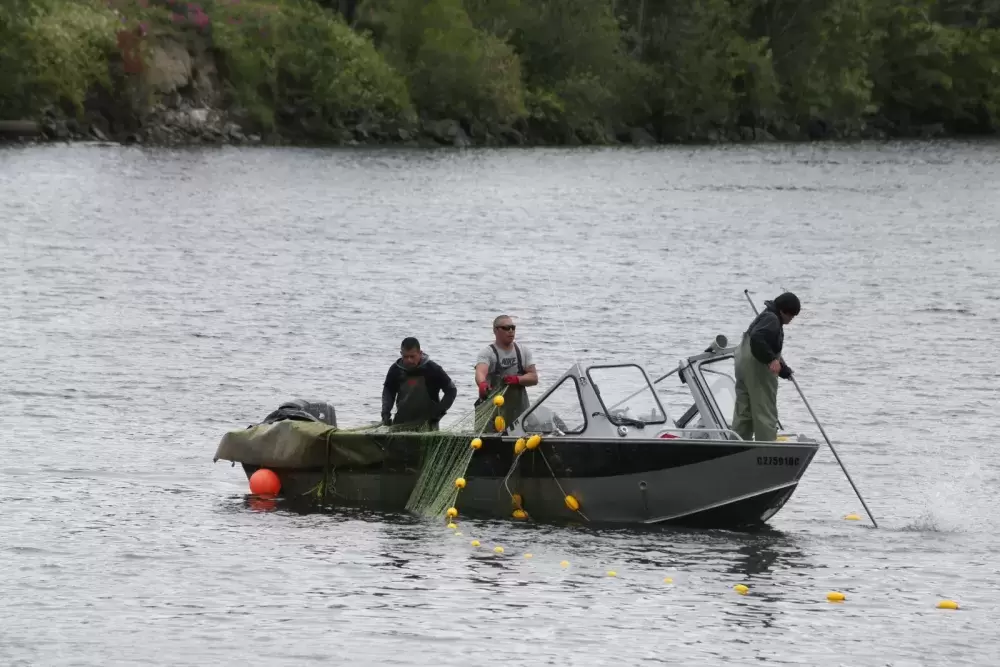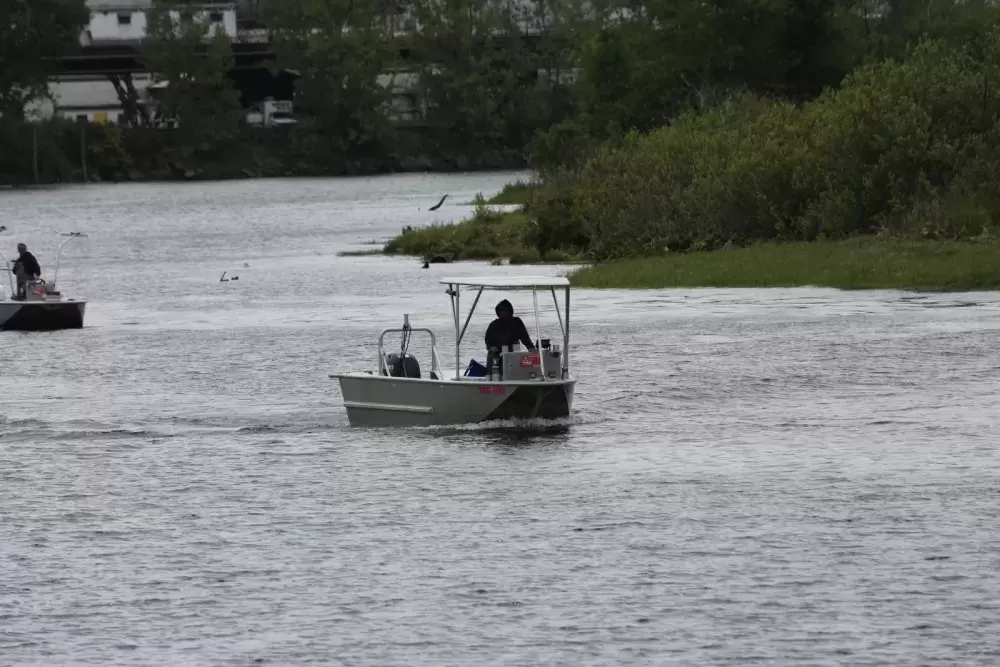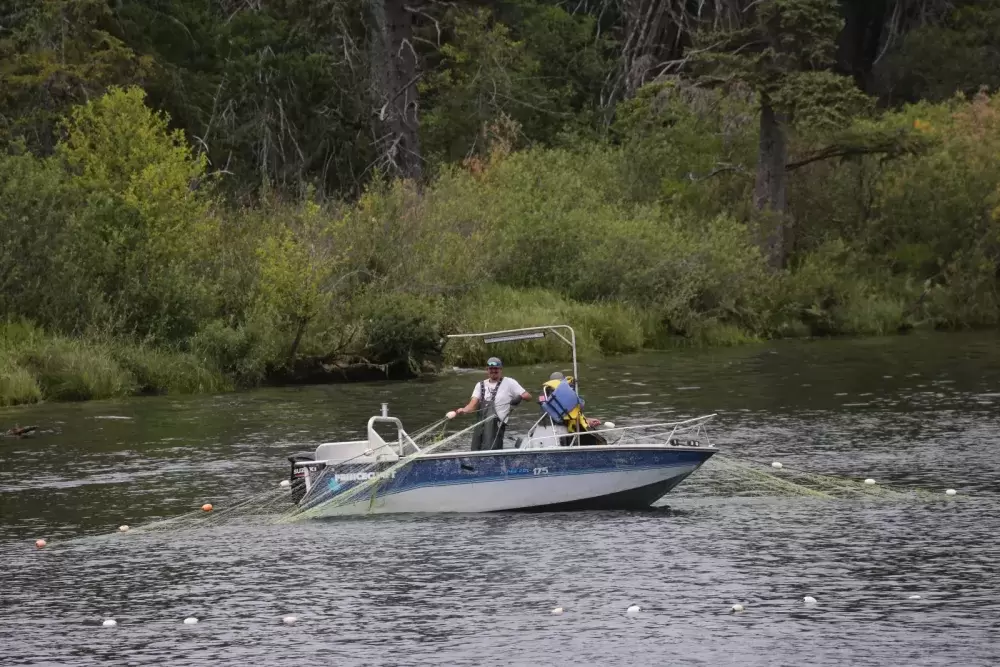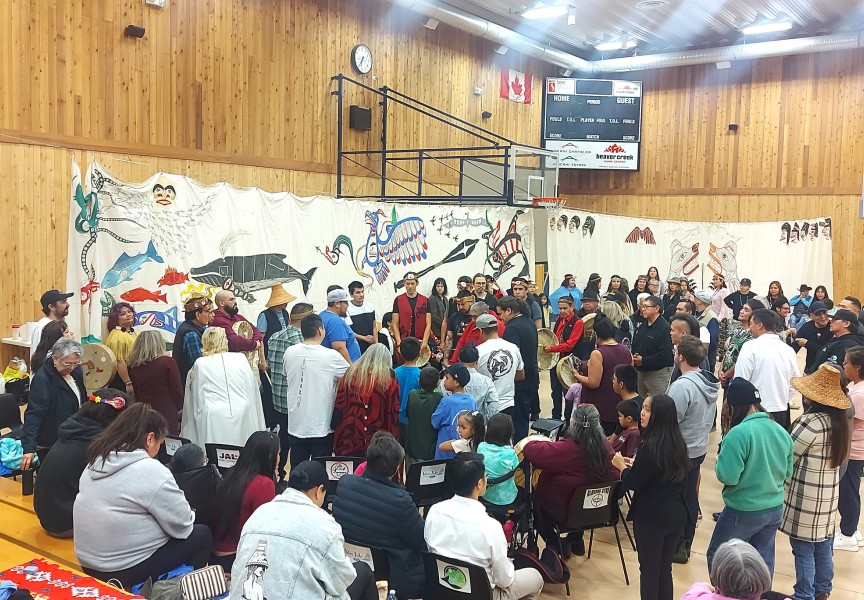Despite a warm spring and transportation difficulties with the prolonged closure of Highway 4, the sockeye season has so far gone smoothly for the First Nations that subsist off the Somass River.
The volume of sockeye salmon returning to the Somass River system is forecast to be 550,000 - 1.1million, according to a bulletin issued June 22 by Fisheries and Oceans Canada. So far at least 33,000 have passed into Sproat Lake, while over 17,000 have made it through the fish ladder facility at Stamp Falls. This puts the 2023 sockeye return slightly ahead of the average run tracked over the last 20 years, according to the DFO update.
“It hasn’t been a huge influx wave or anything, but the numbers have been consistent,” said Tseshaht Fisheries Manager James Laflamme, who is optimistic for the First Nation as members look ahead to the chinook, or spring, run late in the summer. “We’re pretty much right on target. I think everybody will have a nice, smooth efficient fishery and get ready for springs.”
“It’s coming along pretty good,” said Hupacasath Fisheries Manager Graham Murrell. “I think the fish are smart this year, they’re sticking to the bank, but we’re getting good escapement.”
Drought concerns arose after hotter-than-normal weather in May, but since then conditions have stabilized with some rain in June, resulting in average river temperatures this month.
“I was worried,” admitted Murrell. “If that early summer stuck around then we would have some early issues, but it’s been cooler for the last couple here.”
As of June 22 the province has rated west Vancouver Island with a drought level of 3, meaning adverse environmental and socioeconomic impacts are “possible”. This contrasts with the wet, cool June that the region saw last year, which brought a drought level of 0 at the end of the month with no adverse environmental impacts.
But these conditions threw off the Somass fisheries, when escapement forecasts went through wide variations over the season, resulting in openings not always aligning with when the fish were passing through, commented Laflamme.
“Last year with the rains we had and the timing with DFO, they downgraded on the re-assessment and we had to slow down a bit,” he said. “That’s when all the fish showed up, so they upgraded it and guys were out on the water for another four weeks trying to catch fish that had already gone by.”
“In typical years the sockeye fishing tends to ramp down at the end of July, but last year we had a prolonged return and they fished sockeye right up until chinook started in mid August,” said Murrell. “I don’t think that will be the case this year, I think we’ll probably be a more typical year.”
Besides fishing for communal food, social and ceremonial purposes, both First Nations are again engaged in economic opportunity fisheries this year through an agreement with DFO. But with the usual commercial buyers coming from outside of the Alberni Valley, the closure of Highway 4 has brought challenges for the local industry. The highway closed on June 6 due to a wildfire by Cameron Lake, and is not scheduled to reopen until June 24.
This has forced distributors and buyers to use a detour route that adds an estimated four hours of travel time to reach Port Alberni.
“It is impacting the fisheries, for sure,” said Murrell of the highway closure. “It is a challenge for the buyers. You’ve got to be a little bit more on top of your logistics, make sure you have everything you need when the fishery goes, because it’s no quick jump over the hump.”
Early season prices have also been lower, caused in part to the prolonged sockeye season from 2022.
“This year I think prices are a little depressed from a glut of salmon on the market from last year,” said Murrell. “There’s a lot of leftover sockeye from last year still in freezers, so that has impacted the price that we’ve seen for these early fish.”
Parksville’s French Creek Seafood and Hub City Fisheries from Nanaimo have returned to purchase sockeye, but for the first time in over a decade a local commercial buyer has a hand in the market, thanks to a new processing facility at the Harbour Quay. Canadian Seafood Processing operates out of the harbourfront space that was occupied years ago by Port Fish.
“They’re local, so they’re able to take it in and process there,” said Laflamme. “It’s the first time that we’ve had a local processing facility since Port Fish.”
The involvement of a local buyer is welcome for Port Alberni’s First Nations, which see a large proportion of their members participate in the salmon fisheries.
With over 350 members, the Hupacasath have “a couple dozen” fishers on the water during the sockeye run, said Murrell.
The majority of Tseshaht’s population of nearly 1,300 play some sort of role in the fishery, whether it be on boats, in distribution to members or selling sockeye to buyers, said Laflamme.
“It’s a huge part of the community out here,” he commented. “A large proportion of the band benefits from this fishery. Not just fishermen, but the community for fish days, the fishers on the water.”
As of late June, both First Nations were assigned a combined total allowable catch of almost 80,000 sockeye. Nations that are part of the Maa-nulth treaty have been allotted 21,364, while 51,844 are going to the Area D commercial gillnet fleet and 76,714 sockeye are set for Area B seine boats. The sports fishery has been assigned 58,500 total allowable catch in the Alberni Inlet and Barkley Sound.










